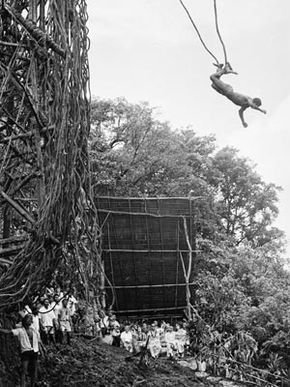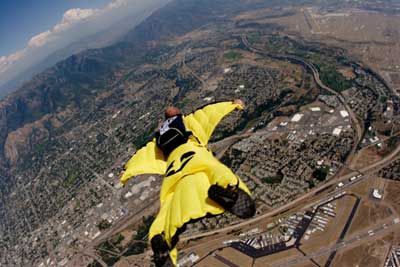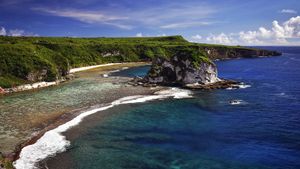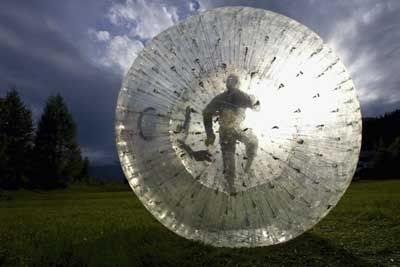Bungee jumping. Enthusiasts say there's nothing like the feeling of plummeting headfirst to the earth, only to be snapped back up at the last second by an elastic cord. But on a small island in the South Pacific, a group of men take part in a ritual that makes the bungee jump look like a leisurely walk in the park.
These men, who live on Pentecost Island in Vanuatu, climb a rickety 98-foot-tall (30-meter) tower, tie vines to their ankles and dive to the ground, falling at speeds around 45 mph (72 kph). When a dive goes correctly, the person gets close enough to touch his shoulders or his head to the earth. Unlike bungee cords, the vines aren't elastic, and the jumpers won't bounce back up. A miscalculation in vine length and a diver may smash into the ground headfirst, resulting in serious injury or death. Vines that are too dry or weak may snap. There are no nets, no helmets and no safety equipment of any kind. The ritual is called land diving, or naghol.
Advertisement
An adventurer named A.J. Hackett witnessed the naghol ritual on Pentecost Island and brought the idea back to his home country of New Zealand. He perfected his first bungee cord around 1986 and performed a famous (and illegal) jump from the Eiffel Tower in 1987 [source: AJ Hackett]. The publicity from this jump brought bungee jumping into the mainstream.
While bungee jumpers have been boinging from bridges all over the globe, land diving in Vanuatu has remained relatively unchanged. The men of Pentacost Island haven't infused their vines with elastic or started wearing helmets. They build the same simple towers they've been building for as long as anyone can remember. And, people can and do die during naghol.
The only real difference these days is that the ritual now attracts crowds of tourists. Queen Elizabeth of Britain visited Vanuatu in 1974 and was a witness when a diver's vine snapped and he plummeted to his death [source: ABC News]. Because of the dangers of land diving, the elders of Pentecost Island refuse to let foreigners participate.
So why do the men of Pentecost Island do this? According to tradition, the naghol ceremony is a ritual to ensure a bountiful yam harvest. Divers literally bless the soil with their shoulders -- gently, they hope. Today, though, naghol is also a way for young men to step into manhood. Some land divers even admit that they only dive for the excitement or simply to impress a particular girl [source: Istvan]. But is it really worth the risk?
Advertisement















